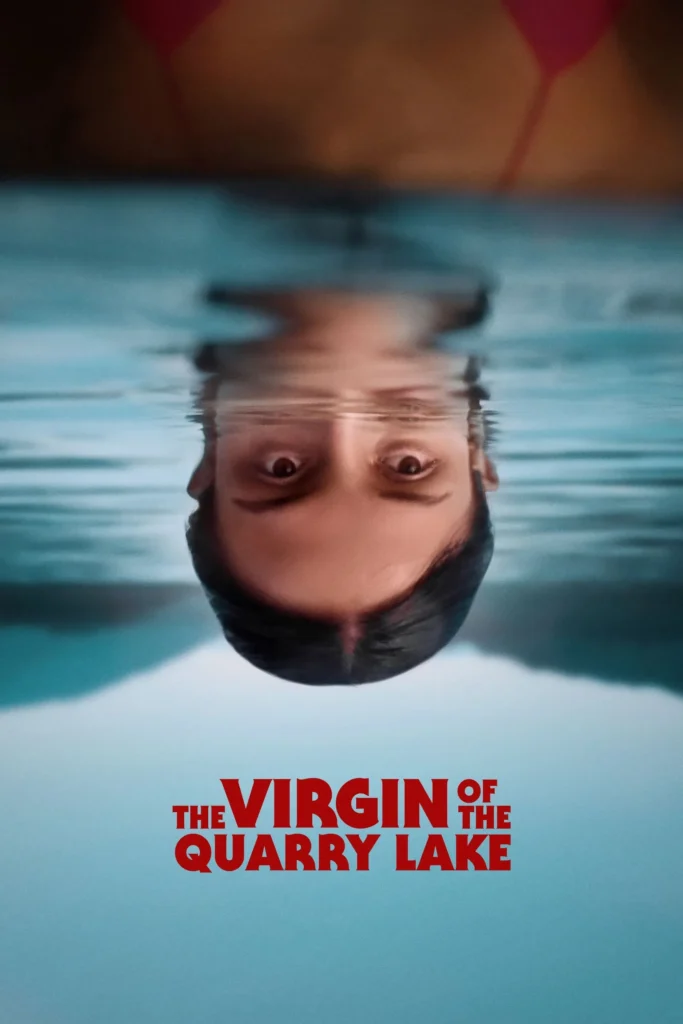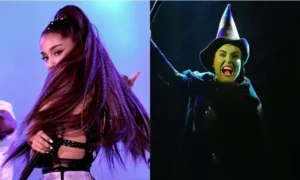Set against the backdrop of political turmoil in early 2000s Argentina, *The Virgin of the Quarry Lake* is an evocative horror film that intertwines teenage drama with a haunting coming-of-age story. Directed by Laura Casabé, this striking narrative premiered at the 2025 Sundance Film Festival, captivating audiences with its raw portrayal of youthful rage and emotional upheaval. The film follows Natalia, a young girl grappling with the pangs of unrequited love and the complexities of friendship, all while navigating a world fraught with chaos. Based on the works of Mariana Enriquez, *The Virgin of the Quarry Lake* masterfully balances the thrill of horror with the nuances of adolescent experiences, inviting viewers to reflect on the darker side of growing up. As Natalia confronts both internal and external demons, the film reveals that the path to self-discovery can be both beautiful and terrifying.
*The Virgin of the Quarry Lake* presents a chilling yet poignant exploration of youth, set against a backdrop of societal disarray. This film, characterized by its horror-infused themes, delves into the complexities of teenage emotion and the struggles of self-identity. It serves as a vivid examination of a young girl’s journey through heartbreak and rage, showcasing the transformative power of her experiences. By intertwining elements of teenage drama with a surreal narrative, the film invites audiences to witness the tumultuous realities faced by adolescents. Drawing inspiration from Mariana Enriquez’s storytelling, this cinematic piece is not only a coming-of-age tale but also a reflection on the psychological impact of growing up in a chaotic environment.
Exploring the Themes of Teenage Rage in The Virgin of the Quarry Lake
The Virgin of the Quarry Lake is a striking exploration of teenage rage, beautifully captured through the lens of its protagonist, Natalia. This horror film intricately weaves elements of teenage drama and a coming-of-age story, reflecting the tumultuous emotions that accompany adolescence. As Natalia grapples with her crush’s attention shifting to another girl, her feelings of jealousy and anger resonate deeply, encapsulating the raw intensity of teenage experiences. The film’s setting during a politically unstable period in Argentina amplifies the emotional stakes, allowing viewers to witness how external chaos mirrors the inner turmoil of youth.
Laura Casabé’s direction enhances the film’s ability to portray teenage rage as both a personal and collective experience. The friendships among Natalia and her friends serve as a microcosm of adolescent struggles, where the desire for acceptance is often overshadowed by jealousy and rivalry. As viewers watch Natalia navigate these complexities, the film effectively communicates that rage can be both destructive and transformative. The inclusion of supernatural elements, such as the ominous atmosphere surrounding the swimming hole, serves to heighten the stakes, making Natalia’s journey all the more compelling.
The Role of Setting in The Virgin of the Quarry Lake
Set against the backdrop of Argentina’s political and economic turmoil in 2001, The Virgin of the Quarry Lake utilizes its environment to deepen the narrative’s impact. The setting not only influences the characters’ lives but also adds layers of tension and unease, which are critical in horror films. The film’s portrayal of a society grappling with chaos mirrors the inner conflicts faced by the teenage protagonists, creating an atmosphere ripe for exploring themes of anger and disillusionment. As Natalia’s world becomes increasingly unstable, the audience is reminded of the real-world implications of personal and societal upheaval.
Moreover, the film’s depiction of a pre-digital age intensifies the sense of nostalgia and isolation experienced by the characters. The local internet cafe serves as a lifeline for Natalia and her friends, highlighting the contrast between their digital interactions and the harsher realities of their surroundings. This juxtaposition adds to the film’s depth, showcasing how technology both connects and isolates individuals, particularly during a formative phase of life. By grounding the story in a specific time and place, The Virgin of the Quarry Lake effectively amplifies its themes of teenage angst and societal decay.
A Deep Dive into Mariana Enriquez’s Influence
Mariana Enriquez’s short stories serve as the foundation for The Virgin of the Quarry Lake, bringing a unique voice to the film that resonates with audiences. Known for her ability to weave horror with elements of social commentary, Enriquez’s influence is palpable in the film’s exploration of teenage identity and the challenges faced by young women. Her narratives often reflect the darker sides of life, which are present in this adaptation, showcasing the struggles of youth in a world filled with external and internal threats. The film stands as a testament to her skill in crafting stories that are both haunting and relatable.
Through her work, Enriquez presents a world where the supernatural often intertwines with the mundane, creating a rich tapestry of experiences that define the teenage years. In The Virgin of the Quarry Lake, this is reflected in the mystical elements that permeate the story, from the mysterious swimming hole to the ominous occurrences that haunt Natalia. This blend of horror and reality not only enhances the film’s narrative but also invites viewers to reflect on their own adolescent experiences, mirroring the emotional complexities of growing up amid societal chaos.
The Symbolism of the Swimming Hole in The Virgin of the Quarry Lake
The swimming hole, central to The Virgin of the Quarry Lake, serves as a powerful symbol within the narrative. It represents both a refuge and a site of danger, embodying the duality of adolescence where innocence and peril coexist. For Natalia and her friends, the swimming hole is a place of freedom and exploration, yet it also harbors the potential for confrontation with their fears and desires. This juxtaposition reflects the complexities of teenage life, where moments of joy are often tinged with underlying tensions and anxieties.
As the story unfolds, the swimming hole becomes a backdrop for pivotal moments of transformation. The characters’ interactions at this site reveal their innermost feelings, allowing for cathartic expressions of anger and frustration. The water, often associated with cleansing and rebirth, also symbolizes the emotional turmoil that accompanies growing up. Through the use of this symbolic location, The Virgin of the Quarry Lake effectively captures the essence of a coming-of-age story, illustrating how the journey toward self-discovery is fraught with both beauty and horror.
Female Friendship in The Virgin of the Quarry Lake
At the heart of The Virgin of the Quarry Lake lies the theme of female friendship, which is portrayed with authenticity and depth. The bond between Natalia and her friends, Josefina and Mariela, encapsulates the joys and challenges of adolescent relationships. Their shared experiences, from playful moments to intense emotional confrontations, highlight the importance of solidarity among young women navigating the complexities of teenage life. As they face external pressures and personal struggles, their friendship becomes a source of strength, illustrating the power of connection during formative years.
However, the film also delves into the darker aspects of female friendships, particularly jealousy and rivalry. As Natalia’s feelings for Diego complicate her relationship with her friends, the narrative explores how romantic interests can disrupt the dynamics of friendship. This tension adds an intriguing layer to the story, showcasing that while female friendships can be empowering, they are not without their challenges. The Virgin of the Quarry Lake ultimately presents a nuanced portrayal of young women’s relationships, acknowledging the complexities that come with navigating love, loyalty, and self-identity.
The Impact of Jealousy in The Virgin of the Quarry Lake
Jealousy emerges as a central theme in The Virgin of the Quarry Lake, driving much of the narrative’s conflict and character development. Natalia’s intense feelings for Diego, coupled with her frustration over his attention toward Silvia, create a perfect storm of emotions that encapsulates the often tumultuous nature of teenage love. This jealousy is not merely a subplot; it serves as a catalyst for Natalia’s character growth, pushing her to confront her insecurities and ultimately embrace her anger. The film’s portrayal of jealousy is raw and unfiltered, reflecting the real emotions that many young people experience.
Moreover, the film skillfully illustrates how jealousy can manifest in various forms, affecting not only romantic relationships but also friendships. As Natalia’s jealousy grows, it begins to erode her connections with her friends, highlighting the fragility of these bonds in the face of emotional turmoil. The Virgin of the Quarry Lake effectively captures the complexities of jealousy, portraying it as both a destructive force and a potential avenue for personal empowerment. Through Natalia’s journey, viewers are invited to reflect on their own experiences with jealousy and the ways it shapes their relationships.
The Surreal Elements in The Virgin of the Quarry Lake
The Virgin of the Quarry Lake is distinguished by its surreal elements that blend horror with the everyday experiences of its characters. These surreal intrusions serve to heighten the emotional stakes, transforming ordinary moments into profound encounters with fear and uncertainty. From the ominous presence of the shopping cart to the mystical spells cast by the characters, the film invites viewers to question the boundaries between reality and the supernatural. This blending of genres creates a unique viewing experience that challenges conventional storytelling within the horror film landscape.
By incorporating surrealism, The Virgin of the Quarry Lake enhances the coming-of-age narrative, allowing for a deeper exploration of the characters’ internal struggles. The surreal elements act as metaphors for the chaotic emotions faced by teenagers, making their experiences relatable and impactful. This innovative approach not only enriches the film’s narrative but also positions it as a significant entry in the realm of horror-tinged teenage dramas, showcasing how fantasy can illuminate the complexities of growing up.
The Cinematic Style of Laura Casabé
Laura Casabé’s directorial vision in The Virgin of the Quarry Lake is marked by a distinctive cinematic style that combines realism with elements of horror. Her ability to create an immersive atmosphere allows viewers to fully engage with the characters’ emotional journeys. Through careful attention to detail, from the film’s visual aesthetics to its sound design, Casabé crafts a world that feels both familiar and unsettling. This stylistic approach is integral to the film’s success, as it enhances the exploration of teenage rage and the societal issues that underpin the narrative.
Casabé’s direction also emphasizes the performances of the young cast, allowing their naturalistic portrayals to shine through. By focusing on the intricacies of teenage emotions, she creates a relatable and authentic representation of adolescence. The film’s pacing, coupled with its strategic use of silence and tension, further amplifies the horror elements, making moments of dread all the more impactful. In this way, Casabé’s style not only serves the narrative but also elevates The Virgin of the Quarry Lake as a noteworthy contender in the landscape of coming-of-age horror films.
The Reception of The Virgin of the Quarry Lake at Sundance
Premiere at the Sundance Film Festival often signals a film’s potential impact on both audiences and critics, and The Virgin of the Quarry Lake was no exception. The film garnered attention for its unique blend of horror and coming-of-age storytelling, resonating with viewers who appreciate nuanced portrayals of teenage experiences. Critics praised Laura Casabé’s direction and the powerful performances of the cast, highlighting how the film effectively captures the complexities of adolescence against a backdrop of societal unrest. This positive reception emphasizes the film’s relevance in contemporary discussions about youth and identity.
Furthermore, The Virgin of the Quarry Lake’s selection for Sundance reflects a growing trend in the film industry to explore diverse narratives that challenge traditional genre boundaries. The film’s ability to intertwine horror with elements of teenage drama makes it a standout piece within the festival’s lineup. As audiences continue to seek out stories that resonate with their own experiences, the film’s themes of rage, jealousy, and the search for identity will likely keep it in the conversation long after its initial screening.
Frequently Asked Questions
What themes are explored in The Virgin of the Quarry Lake?
The Virgin of the Quarry Lake delves into themes of teenage rage, jealousy, and the complexities of growing up in an unstable environment. Set against the backdrop of Argentina’s political turmoil in 2001, the film portrays a young woman’s struggles with her emotions, friendships, and the societal pressures that shape her coming-of-age journey.
How does The Virgin of the Quarry Lake relate to Mariana Enriquez’s work?
The Virgin of the Quarry Lake is based on short stories by Mariana Enriquez, known for her ability to blend horror and social commentary. The film captures the eerie and surreal elements characteristic of Enriquez’s writing, exploring the inner lives of teenage girls through a lens of both realism and fantastical horror.
What is the significance of the setting in The Virgin of the Quarry Lake?
The setting of The Virgin of the Quarry Lake is crucial, as it reflects a time of political and economic upheaval in Argentina during 2001. The chaotic environment influences the characters’ emotions and actions, creating a backdrop that enhances the film’s exploration of teenage angst and the feeling of impending doom.
How is teenage friendship portrayed in The Virgin of the Quarry Lake?
Teenage friendship in The Virgin of the Quarry Lake is portrayed as both supportive and tumultuous. Nati’s relationships with her friends, particularly with the sisters Josefina and Mariela, highlight the complexities of loyalty, envy, and the challenges of navigating adolescence together amidst external chaos.
What kind of film is The Virgin of the Quarry Lake?
The Virgin of the Quarry Lake is a horror-tinged coming-of-age drama that combines elements of teenage drama with supernatural horror. It presents a unique blend of genres, exploring the darker aspects of adolescence while also examining personal and societal conflicts.
When did The Virgin of the Quarry Lake premiere?
The Virgin of the Quarry Lake premiered at the 2025 Sundance Film Festival, showcasing its thematic depth and artistic merit to a broader audience.
Who directed The Virgin of the Quarry Lake?
The Virgin of the Quarry Lake was directed by Laura Casabé, who brings her vision to life through an exploration of teenage emotions and the haunting realities faced by young women.
What makes The Virgin of the Quarry Lake visually distinctive?
Visually, The Virgin of the Quarry Lake is distinctive for its dreamy yet gritty aesthetic, which mirrors the protagonists’ emotional turmoil. The film’s cinematography captures the nostalgic yet unsettling atmosphere of early 2000s Argentina, enhancing the overall impact of its narrative.
Is there a release date for The Virgin of the Quarry Lake?
As of now, The Virgin of the Quarry Lake does not have a confirmed release date, following its premiere at the 2025 Sundance Film Festival.
What audience can relate to The Virgin of the Quarry Lake?
The Virgin of the Quarry Lake appeals to audiences interested in horror films, coming-of-age stories, and those who appreciate nuanced portrayals of teenage life. Fans of Mariana Enriquez’s work and viewers drawn to psychological explorations of youth will find it particularly resonant.
| Key Points |
|---|
| The Virgin of the Quarry Lake is a coming-of-age horror drama directed by Laura Casabé. |
| The film is based on short stories by Mariana Enriquez. |
| Set in Argentina during the political and economic turmoil of 2001. |
| Follows Natalia, a teenage girl dealing with unrequited love and teenage angst. |
| Explores themes of teenage rage, jealousy, and the struggle for identity. |
| Features elements of horror and surrealism intertwined with real-life issues. |
| The film emphasizes the inner lives of teenage girls and their emotional complexities. |
| The Virgin of the Quarry Lake was screened at the 2025 Sundance Film Festival. |
Summary
The Virgin of the Quarry Lake is a unique exploration of teenage emotions set against a backdrop of societal chaos in early 2000s Argentina. This film not only highlights the turbulence of adolescence but also delves into the darker aspects of growing up, such as jealousy and heartbreak. By intertwining horror elements with a coming-of-age narrative, it presents a captivating look at how a young woman confronts her feelings and the realities of her environment. As viewers follow Natalia’s journey, they are invited to reflect on their own experiences of youth and the complex emotions that accompany it.





